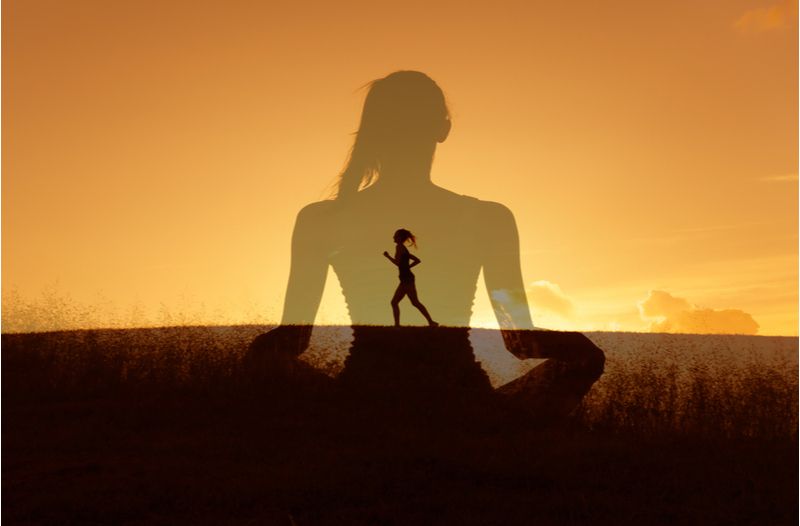Endurance Running: Fit after 50
Here are some useful recovery tips from Stephanie Irving, ultra trail runner and veteran of two 100-milers and four 100Ks. While she might be back-of-the-pack, Steph can still claim an age group win once and a while!

Movement nourishes our muscles, our joints, and our soul. All movement is good movement. So appropriately, one of the most important things I do the day after a long run to rejuvenate my body is: move.
Not necessarily a run. Not specifically a workout. Just a conscious, focused moving of my body.
Every trail runner has their post-run routine. For me, it begins with hydration, nourishment, and leg drains. Next—after savoring the endorphins swimming through my cells, and maybe even after a good night’s sleep—it’s time to rejuvenate those muscles and joints that worked so hard.
I’m not a front-of-the-pack runner. I’m at the opposite end of ultramarathon journeys. I’m lucky if—at 57—I can nab an age group placement. I figure that as long as I’m still finishing, it’s a win in my book.
I didn’t start running to take care of my body. I started running to take care of my soul. And I ended up mending both. Most recently, I finished the Steep Ravine 50K in 7:54. Admittedly, eight hours is a long time to be out there, on the trail, moving forward. To many, it seems unfathomable. I saw it as an eight-hour training run toward my next 100K.
Rest is important. But to truly rejuvenate your body, you need to get moving again. Remember: All movement is good movement. It could be a stroll with friends. If your legs are sore, think of the walk like a self-massage with every step gently stretching your calves. Or you can take a bike ride. The circular motion of pedaling uses slightly different muscles than running, acting to both strengthen and restore.
If you don’t have time for movement, think again. If you use a standing desk (I recommend it highly), think of yoga’s Tadasana, or “Mountain Pose.” Stand up just a little straighter, with intention, and think about using your core when you send that email. Heading to the airport? Avoid elevators and escalators. Make a conscious effort to use the stairs or to walk briskly alongside the moving sidewalk. On a train? Stand and balance, subtly moving your lower leg muscles and your core. Heck, you can even empty the dishwasher with intention—stretching high to put the glasses away, bending low to pull out the plates. With just a little bit of intention, you can put movement into your every day.
Personally, I find that the best post-run treat for your body after a long Saturday run is yoga on Monday—where an hour of twisting poses can lubricate every muscle and joint in your body.
Here then, in brief, are my five top tips for post-running bliss:
- Replenish your fluids. First water, then a hot, post-run chai with whole milk after a chilly run.
- Refuel your muscles. Lentil stew or steakhouse chili at the finish line works just fine. I’m not particular; I just want to get some real food in me as soon after my run as possible.
- Elevate your legs. Either before or after your post-run shower. Or better, both. After the shower, feel free to fall asleep if you want to!
- Just sit. Or stand. It doesn’t matter. Just take some time to relish in the joy tingling through every cell in your body.
- The following day: Move. Walk, bike, or do yoga. It doesn’t really matter. Just move your legs, or any part of your body. One of my recoveries after a 50-mile run is a (slow) 50-mile bike ride. It sounds crazy, but it got rid of any lactic acid build-up. You don’t have to go that far, but the more you can move the better.
Our bodies are amazingly resilient. Movement is everywhere. Find it. And be nourished—in so many ways.
-Article written by guest contributor Steph Irving.
Hear From Our Patients Who've Returned to Running
We have patients now running triathlons and (ultra)marathons, climbing mountains, skiing a hundred days a year on the replaced parts inside their knees. Below is the story of an ultra runner Lanny Benson who maintained his ultra running career at age 65 with a robotic partial knee replacement.
You may learn more about how our knee replacement program can help keep you running at our Robotic Joint Center page.
For more on how endurance athletes can play for a lifetime, head over to this page with expert guidance from Dr. Stone and inspirational stories from our triathletes and ultra runners.